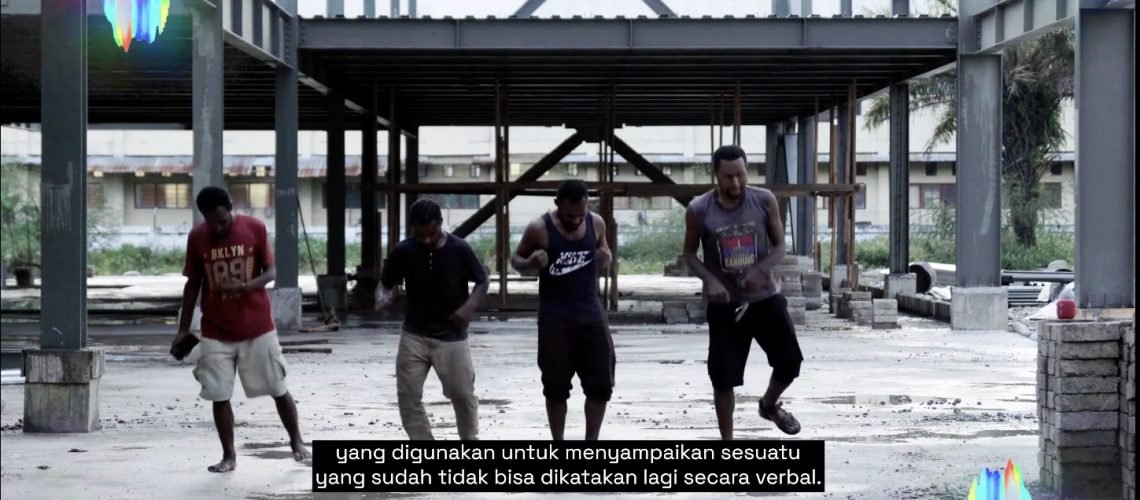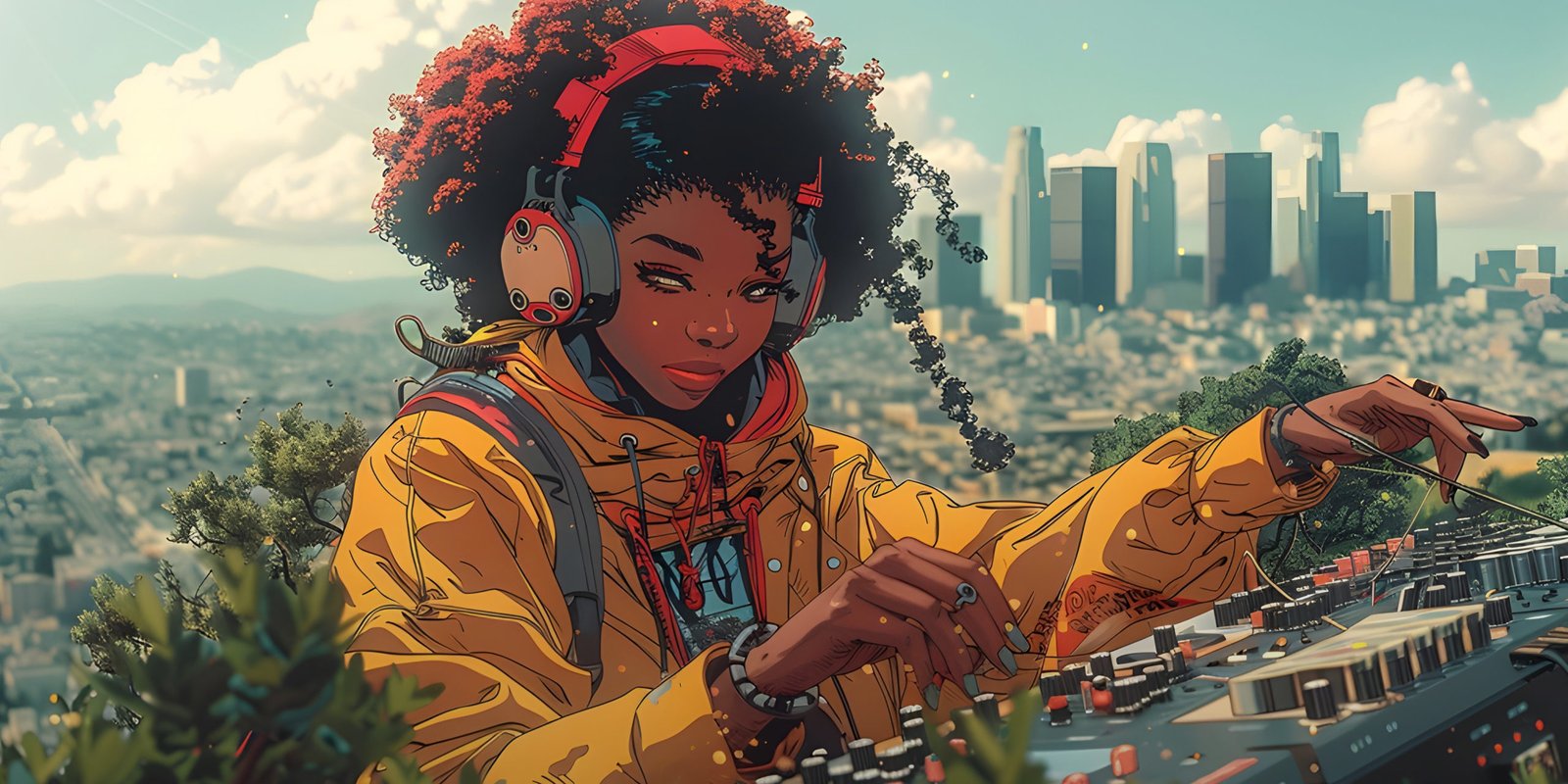In the mountains of western Papau, a new electronic sound is emerging. It’s fusing traditional sounds with jaunty synthesized beats in a rapid-fire, high-energy dancefloor brew. And just try to listen without your whole body set in motion.
Our friends at Yogyakarta-based Yes No Wave Music label/platform are championing this music, working with the musicians who invented it to tell their story with both a release and a new documentary.
I’m glad to get the word out, as I hope this gets programmed in some festivals; I haven’t seen the film yet, but I’m excited to do so. (Wok the Rok of Yes No will definitely hook you up.)
First, though, don’t miss the release the Indonesian underground label put out back in February – Asep Nayak‘s Etai Wisisi Waga O Wamena Hanorasuok:
Asep Nayak blew us all away here in Berlin at CTM Festival, as us monochromatic techno denizens had to reprogram our bodies for the new rhythm. But wow, while the established western DJs and media outlets fret endlessly about different bpm counts or splitting hairs between 90s styles, yeah, this is just spontaneous new music that’s rooted in music people grew up with, made for dancefloors. You know – dance music. Like to dance to.
The release is also on archive.org – useful, since Bandcamp is blocked in some countries without a VPN. The “liner notes” for that digital release I’ve pasted below, as they tell the whole story.
And yes, all of this is being made in FL Studio Mobile. The mobile version takes over here, as now worldwide mobile devices are more ubiquitous than computers. There’s a second article on the style on westpapaustory.com. (CSS is breaking for me on that site, but it’s readable.) Here’s what they say about the app and how it fits in:
Asep learned about using this app from one of his older siblings, who is also a local musician. His name is Nikolas.
Nikolas was the first person to introduce Wisisi to Asep. However, Nikolas was only helping him install the app on his phone. The plug-ins and other features were something that Asep needed to figure out on his own.
In 2013, Asep still did not have a mobile phone. He finally had his first in 2018, when he was in his senior year in high school. A year after that, Asep started focusing more on learning from YouTube tutorials in terms of making music with Fruity Loop Studio.
Asep usually needs at least an hour or two to produce music. When he feels ambitious about polishing his work better, he takes four to five hours of making music. There are times when he forgets to eat and sleep.
Here’s the official trailer for the film. All words are in Indonesian, but you can get a rough translation using YouTube’s closed captioning (click the cog to change the language). Nikolas, Asep, and co are all featured:
You don’t talk to Asep Nayak and peg him as a dance music provocateur. Timid, soft-spoken, and disarmingly polite, he’s more a reflection of his daytime self: a 22-year old with wildly varying interests struggling to graduate college. Drag him to any dance floor in the highlands of West Papua, though, and the kid turns into a star.
Except it won’t look like your garden variety dance gig. The music is fast paced, relentless, almost trance-inducing. A flash mob of men and women who barely know each other join forces in a choreographed dance routine they are instinctively familiar with. Meanwhile, a pair of small, rusty speakers are blaring music sourced from communal USBs or laggy Youtube connections.
Forget everything you think you know about dance music. Welcome to the world of wisisi, Wamena’s dance dance revolution that’s ready to take the world by storm.
The story begins in Wamena, a town situated in the highlands of West Papua. Pushed to the margins even by West Papuan standards, the region is popularly associated with natural disasters, civil strife, and intermittent clashes between government forces and pro-independence fighters. Fertile ground, then, for electronic dance music.
Nikolas Surabut was barely thirteen years old when he began getting bored of traditional wisisi, a ritualistic music and dance often performed at harvest ceremonies, funerals, and weddings in the valleys of Baliem, deep in the mountains of West Papua. “You couldn’t really record these performances for posterity,” he said, speaking from his home in Wamena. “They play tonight, the entire village dances, but tomorrow all we have left are stories. I wanted something that would last longer.”
It was 2009, and the youthful Nikolas began consulting older friends who he knew “made music with computers.” They directed him to a catch-all music production software: Fruity Loops Studio, popularly known as FL Studio. Light, simple to use, and easy to pirate, the software became the weapon of choice for aspiring music producers working with a limited budget and even more limited hardware.
“My friends were mostly making reggae and hip hop with FL Studio,” Nikolas said. “I wondered if I could use FL Studio to recreate wisisi instead.” A keen musician himself, Nikolas began breaking down the basic tenets of wisisi: a wooden, lute-like instrument Nikolas was well-versed in; pikon, a mouth harp made out of bamboo with a similar trance-like quality to the didgeridoo; and tifa, a percussion made out of wood and dried leather, ubiquitous in many Papuan cultures.
“I tinkered with FL Studio and laid down beats inspired by tifa,” Nikolas said. “But mainly I was looking for sounds that best emulate the sounds of our wooden guitar.” The end result was a masterpiece in taking tradition apart and moving beyond its constraints. Wisisi’s repetitive, mantra-like chants are recreated faithfully, but its middling tempo is set aside for furiously quick, propulsive beats. Each song is barely two and a half minutes long, with the traditional guitar melodies reworked into intricate rhythm sections and interlocking percussion. The cherry on top, of course, are the painfully retro robotic shouts and ad-libs scattered intermittently throughout the song.
“The great thing about FL Studio is that the final product is already in mp3 format,” Nikolas said. “So it was easy to move the songs to my phone and play them for my friends.”
Nikolas set to work, insisting on playing his newfangled compositions at student protests, weddings, fundraisings, and his local hangout spots. “My music spread from phone to phone, peer to peer, hangout spots to hangout spots,” he recalled. “You hear it at a party, and if you like it, you download it from the host’s phone. Slowly, it spread around Wamena.”
One of the earliest converts was Asep Nayak. Only two years Nikolas’ junior, Asep heard the now-grizzled pioneer’s music at a birthday party and was captivated. “When they played wisisi, the dance floor erupted,” he recalled. “I wanted to make this kind of music. So I asked around to my friends.”
Unlike Nikolas, he was no prodigious guitar player. He came from a stoic, deeply religious family, and was more renowned to his friends as a talented football player rather than a musician. Asep persisted, though, and began uploading his music through a newly popular video platform: YouTube.
Even today, the mantra persists: Nikolas made it first, Asep second. The pair’s teenage kicks steadily infused Wamena’s party scene, supplanting genres beloved by its youths like reggae and hip hop.
Don’t imagine them taking over the DJ booth and performing live like any musician, though. Wisisi musicians are less live performers and more portable jukeboxes ready to take any party by storm. They would bring their music over to roadside stalls, birthday parties, hangouts, and beachside barbeques on their phone or USB stick. Someone somewhere will inevitably bring active speakers, the phone or USB stick is plugged in, press play, and cue pandemonium.
All the traditional norms of popular music are thrown out the window. For one, there are no fixed titles for any song. Cursory searches at Asep Nayak’s Youtube history will reveal bewildering titles such as “Music Wisisi Wamena”, “Music Wisisi Baru”, and “Wamena Wisisi Slow”, while Nikolas’ repertoire contain the unhelpfully-named ditties “wisisi terbaru 2021 (1)” and “wisisi terbaru 2021 (4)”.
There are no wisisi music festivals. Nobody has an “album” of any kind. There are no record labels. There are no fixed collective, crew, or established scenes. There is no formal copyright at play, no royalty scheme or even a fleeting desire for professionalism. The party is free, the music too, and the drinks there are strong and unrelenting.
Simply put, wisisi is music as popular anarchy.
Wisisi’s reputation as the domain of mountain dwellers are eroding fast, with his newfound popularity landing him performance spots in the bright lights of Jayapura, West Papua’s biggest city. “I was invited to perform as a DJ in Jayapura recently, and when I played my music, both their speakers caught fire!” Asep said, laughing. “They can’t handle this music. They don’t know what they’re doing yet!”
Nikolas and Asep believe that in time, the world will wise up to wisisi. “Even people from Wamena sometimes don’t understand this music, especially if they’ve been away for a while,” Asep said. “But they will love it. They learn the dance. They take the music on their phones. And when they meet the diaspora elsewhere, they will lead the party. Eventually it will spread.”
“If you play wisisi, people will drop their work and rise from their beds,” Asep claimed. “Come to Wamena and find out for yourself.” — Raka Ibrahim




